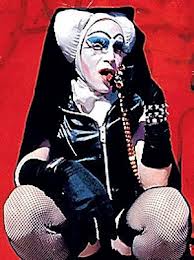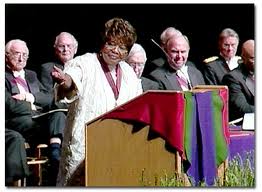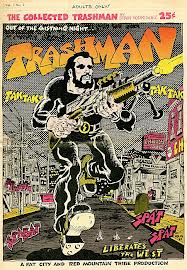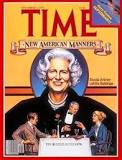2012 R.I.P.
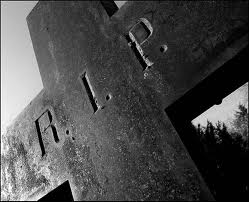 I’m not sure what got me on this obit jag, but I’ve discovered surprising, poignant, memorable bits of our history (in some cases, I’ve simply had my memory jogged). All together, a mention of people who were players in their fields adds up: what we do with our lives fits together to create our culture, shape our world. It’s kind of cool, and mostly positive.
I’m not sure what got me on this obit jag, but I’ve discovered surprising, poignant, memorable bits of our history (in some cases, I’ve simply had my memory jogged). All together, a mention of people who were players in their fields adds up: what we do with our lives fits together to create our culture, shape our world. It’s kind of cool, and mostly positive.
This is the third, and final, post in my 2012 necrology series. I’ve already said farewell to writers and musicians. In this entry, a mini tribute to some other important and interesting people who died in 2012–people whose work or lives contributed to our national character in recent decades.
Usually this sort of piece begins with the famous actors and performers who have died. So, let’s mix it up. Let’s begin with civic activists. Boring? Hardly. We lost some extraordinary march-to-their-own-drummer public figures during 2012. Like Sister Boom Boom, one of the early members of the social protest performance group known as Sisters of Perpetual Indulgence. Boom Boom was born Jack Fertig and was active on the San Francisco gay rights scene during the ’80s.
Several environmental activists died–people whose work we now take for granted but who were considered “fringe” decades ago, like Selma Rubin, who served in the Navy during WWII, and later became an environmental activist after a major oil spill near Santa Barbara, which led to her role in the creation of Earth Day. Other conservationists of note: Russell Train, who headed the Environmental Protection Agency and later the World Wildlife Fund; F. Herbert Bormann, the ecologist who “discovered” acid rain; and, Barry Commoner, who in addition to his progressive political life, wrote some of the first scientific papers on the negative impact of above-ground and other nuclear testing.
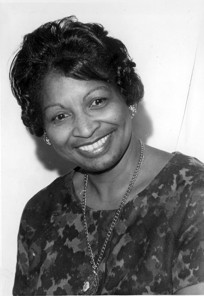
Thelma Glass, geography professor and last survivor from the group of women who organized the Montgomery bus strike following Rosa Parks’ civil disobedience.
Two in-the-trenches civil rights activists died in 2012: Addie Wyatt, a Chicago civil rights and labor leader, and Thelma Glass, another extraordinary civil rights leader, from Alabama, who’s obituary in the NY Times reminds us of her role in the Montgomery bus strike. I want you to see photos of these two women–women whose names are probably unfamiliar to you–but who belong in the pantheon of American leaders.
An activist in the fight for Native rights and in the American Indian Movement, Russell Means, known to many for his role in Last of the Mohicans and other films later in his life, died at the age of 73.
There’s one other activist and educator I’d like to mention, someone whose name I’m sure is unfamiliar to you: Jerry Starr. I met Jerry back in the late ’80s when I helped organize a Vietnam retrospective at St. Lawrence University. We brought together Vietnam era vets and anti-war activists. Jerry was one of our participants–a serious thinker–he found the words to bring people together, to find common ground after what had been the most divisive American experience since the Civil War.
The traditional path to change–politics–saw its losses during 2012, too. These names you’ll recognize, particularly that of J. Christopher Stevens, the US Ambassador to Libya, who was killed in 2012. From an earlier time: George McGovern, whose 1972 presidential bid was a coming of political age experience for many young Americans; and, Nicholas Katzenbach, who served as US Attorney General under President Johnson.
Some interesting thinkers and scientists died–people you never knew about but whose work has had an impact on our lives. Eugene Polley‘s invention of the remote control changed tv viewing across this country; Larry Stevenson, whose design innovations had a similar impact on the world of skateboarding; N. Joseph Woodland, whose work led directly to the modern barcode; and one of my favorites, Sam Porcello, “Mr. Oreo,” whose food experiments helped create the Nabisco classic.
Also gone: surgeon Joseph Murray, who performed the first successful human kidney transplant in 1954; aerospace engineer and astronaut Neil Armstrong, the first person to walk on the moon; physicist and astronaut Sally Ride, the first woman to enter into Low Earth Orbit; and, Evelyn Bryan Johnson, known as “Mama Bird,” died at the age of 102 retaining her record as the woman pilot with the most hours of flying in the world.
 Many sports figures of the last century died in 2012. From baseball, Red Sox players right fielder Bob Dipietro, pitcher Mel Parnell and shortstop and coach Johnny Pesky; Yankees first baseman Bill Skowron and pitcher Thad Tillotson. From basketball, Celtics Hall of Famer Arnie Risen, and Knicks players Pat Cummings, and Art Heyman— maybe not all top tier athletes, but how many people make it to the pros? I imagine them in their prime. Also, under an ugly end of life cloud, football coaching icon Joe Paterno. More from the sports world: Angelo Dundee, who was boxer Muhammad Ali‘s trainer; and, the best as far as I’m concerned, were the gals from the All-American Girls Professional Baseball League which had its heyday from the early forties to mid-fifties and which lost a number of its stars during 2012 including Marie Kruckel, Nancy Mudge, Doris Neal, and several others from the league made famous by the movie A League of Their Own.
Many sports figures of the last century died in 2012. From baseball, Red Sox players right fielder Bob Dipietro, pitcher Mel Parnell and shortstop and coach Johnny Pesky; Yankees first baseman Bill Skowron and pitcher Thad Tillotson. From basketball, Celtics Hall of Famer Arnie Risen, and Knicks players Pat Cummings, and Art Heyman— maybe not all top tier athletes, but how many people make it to the pros? I imagine them in their prime. Also, under an ugly end of life cloud, football coaching icon Joe Paterno. More from the sports world: Angelo Dundee, who was boxer Muhammad Ali‘s trainer; and, the best as far as I’m concerned, were the gals from the All-American Girls Professional Baseball League which had its heyday from the early forties to mid-fifties and which lost a number of its stars during 2012 including Marie Kruckel, Nancy Mudge, Doris Neal, and several others from the league made famous by the movie A League of Their Own.
There’s one more sports star we lost in 2012, someone who deserves special mention: tennis player Margaret Osborne duPont, who won 37 Grand Slam titles and 25 US Championships–the all-time record–during her 1940s career.
Okay, you still with me? Onto the world of art. First, an underground cartoon hero for decades, Spain Rodriguez; outsider artist Mr. Imagination, whose work was made from bottle caps and other found objects; abstract expressionist painter Paul Jenkins; graffiti artist Stay High 149; Leroy Neiman, known for his bright, expressionist sports-oriented paintings; and, photographer Eve Arnold, whose work included iconic pictures of the famous of her era (Marilyn Monroe, Malcolm X, Queen Elizabeth II) as well as moving images of our country’s underclass and disenfranchised.
There were deaths across the entertainment field, from several generations and genres. Among the actors who died: Ernest Borgnine, who won an Academy Award for his poignant performance in Marty, and later worked in tv on McHale’s Navy, ER, and other series; Celeste Holm, a star of stage and screen in the 1940s and ’50s, who was the leading lady in the original stage version of Oklahoma!; Jack Klugman, best known for his role as Oscar in the Odd Couple, had a career that stretched over decades beginning in the 1940s; Larry Hagman, another actor best-known for work on a television series–in this case, Dallas; Andy Griffith, a popular tv actor who received the Presidential Medal of Freedom in 2005; Sherman Hemsley, star of the tv series The Jeffersons; Al Freeman, Jr., a stage, screen and tv actor who was featured in the mini-series Roots and the movie Malcolm X; Ben Gazzara, also a stage, screen and tv actor who worked with John Cassavetes during the 1970s and as a character actor in movies made by the Coen brothers, Spike Lee, John Turturro and others ; and, comedienne Phyllis Diller, who was ubiquitous on 1960s and ’70s tv.
Behind the curtain, these deaths from the entertainment world: film producer Richard Zanuck; documentary film-maker and public access tv pioneer George C. Stoney; Mike Wallace, journalist (60 Minutes) and media personality and producer; and, Sesame Street writer and producer Judy Freudberg.
Finally, a sampling of some people who contributed across a range of professions or achieved renown for a variety of reasons: legal scholar and 1987 Supreme Court nominee, Robert Bork; Letitia Baldridge, etiquette expert who served as Jackie Kennedy’s social secretary; Murray Lender, founder of Lender’s Bagels, who I think of as the guy who moved the bagel out of NYC into small town America; philosopher Paul Kurtz, known to some as the “father of secular humanism”; and, Roger Boisjoly, the engineer who is best known for warning NASA about design flaws in the solid rocket boosters of Space Shuttle Challenger, urging the cancellation of the mission the day before the fatal crash.
One last mention…Houston McCoy, one of two police officers who shot and killed Charles Whitman to end a killing spree at the University of Texas in Austin in 1966. Why I do include McCoy here? It’s personal. I was hitchhiking through Austin that day, on my way to Mexico. In some ways, this incident was the first in what has stretched into decades of mass shootings across our country. After the Aurora movie theater shooting last summer, I wrote about my Austin experience. Just a few months later, the horrible shooting in the Newtown elementary school. So, a bit of wishful thinking on my part as we bid farewell to 2012, let’s bid farewell to mass shootings, to the episodes that have become part of the rhythm of modern American life…and death.
Tags: 2012, 2012 deaths





